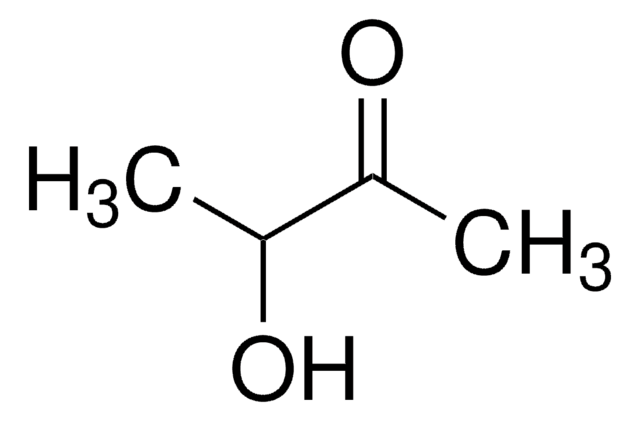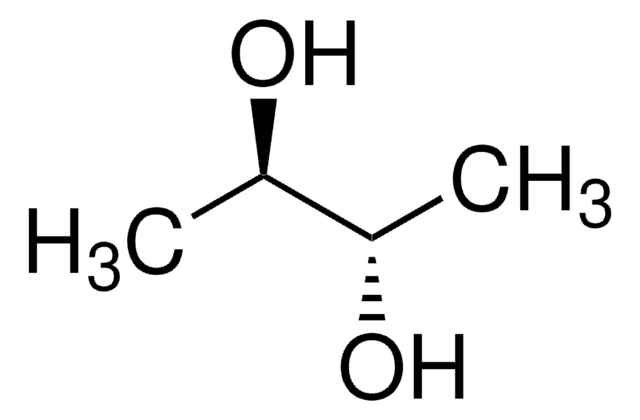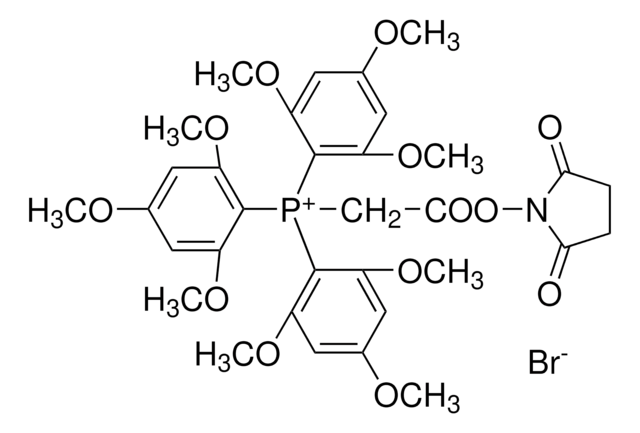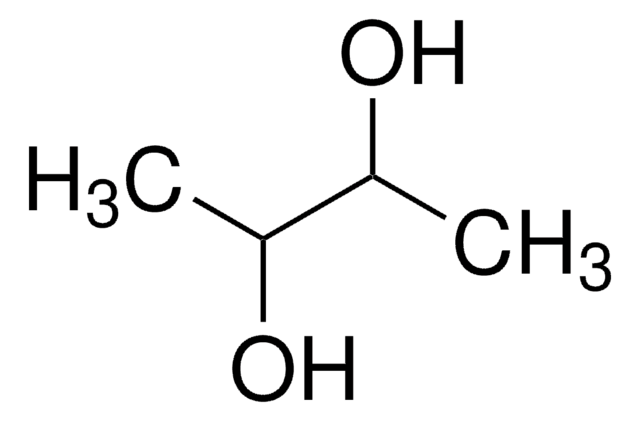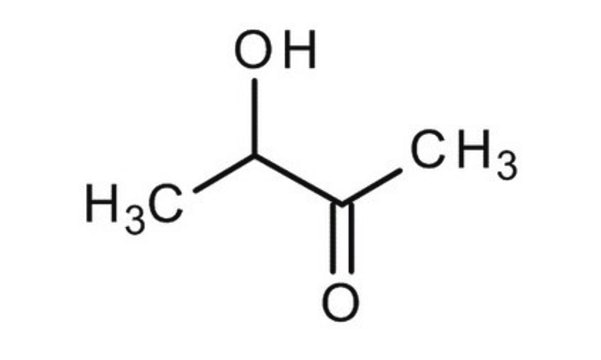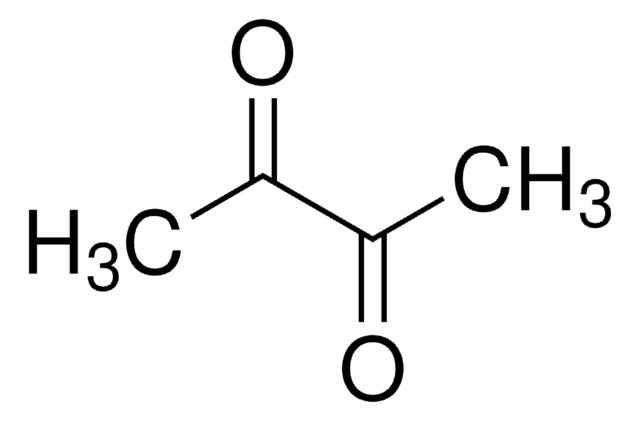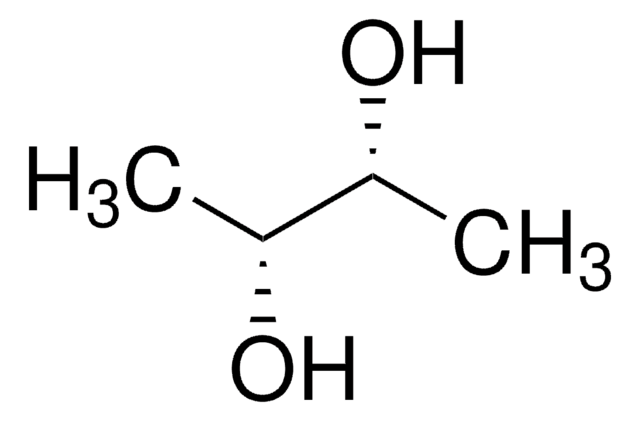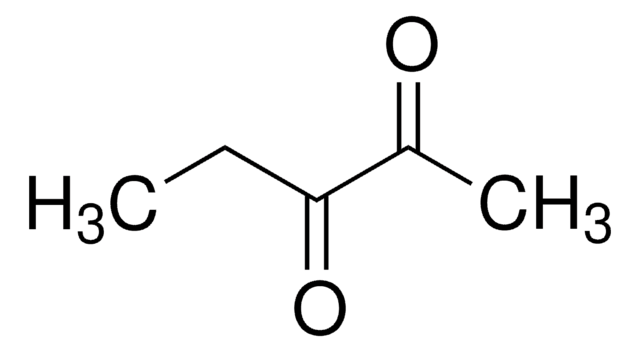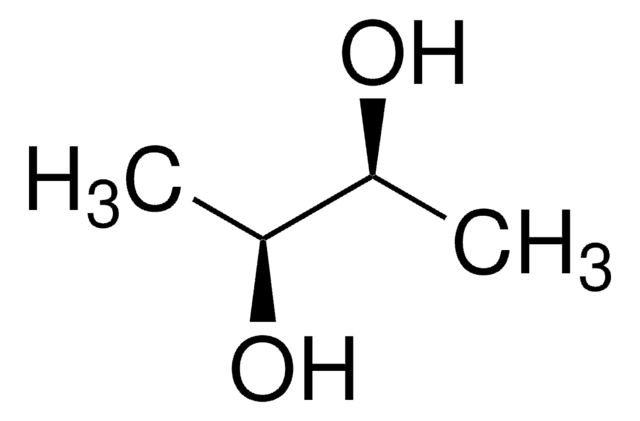A17951
Acetoin
May exist as crystalline dimer
Synonym(s):
3-Hydroxy-2-butanone, Acetylmethylcarbinol
About This Item
Recommended Products
Quality Level
assay
≥98.0% (GC)
form
crystals
refractive index
n20/D 1.417 (lit.)
bp
148 °C (lit.)
mp
15 °C (monomer)
90 °C (dimer) (lit.)
density
1.013 g/mL at 25 °C (lit.)
food allergen
no known allergens
storage temp.
2-8°C
SMILES string
CC(O)C(C)=O
InChI
1S/C4H8O2/c1-3(5)4(2)6/h3,5H,1-2H3
InChI key
ROWKJAVDOGWPAT-UHFFFAOYSA-N
Looking for similar products? Visit Product Comparison Guide
Related Categories
signalword
Danger
hcodes
Hazard Classifications
Eye Dam. 1 - Flam. Liq. 3
Storage Class
3 - Flammable liquids
wgk_germany
WGK 1
flash_point_f
118.4 °F - closed cup
flash_point_c
48 °C - closed cup
ppe
dust mask type N95 (US), Eyeshields, Gloves
Certificates of Analysis (COA)
Search for Certificates of Analysis (COA) by entering the products Lot/Batch Number. Lot and Batch Numbers can be found on a product’s label following the words ‘Lot’ or ‘Batch’.
Already Own This Product?
Find documentation for the products that you have recently purchased in the Document Library.
Customers Also Viewed
Protocols
-Cymene; 2,5-Dimethylpyrrole; Acetoin, ≥96%, FCC, FG; 2,5-Dimethylpyrazine; 2,6-Dimethylpyrazine; 2-Ethylpyrazine, ≥98%, FG; 2,3-Dimethylpyrazine; 4-Heptanone; 3-Ethylpyridine; 2,3,5-Trimethylpyrazine; Furfural; Pyrrole; Furfuryl acetate; Linalool; Linalyl acetate; 5-Methylfurfural; γ-Butyrolactone; 2-Acetyl-1-methylpyrrole; Furfuryl alcohol; 2-Acetylpyrrole; Pyrrole-2-carboxaldehyde
Our team of scientists has experience in all areas of research including Life Science, Material Science, Chemical Synthesis, Chromatography, Analytical and many others.
Contact Technical Service